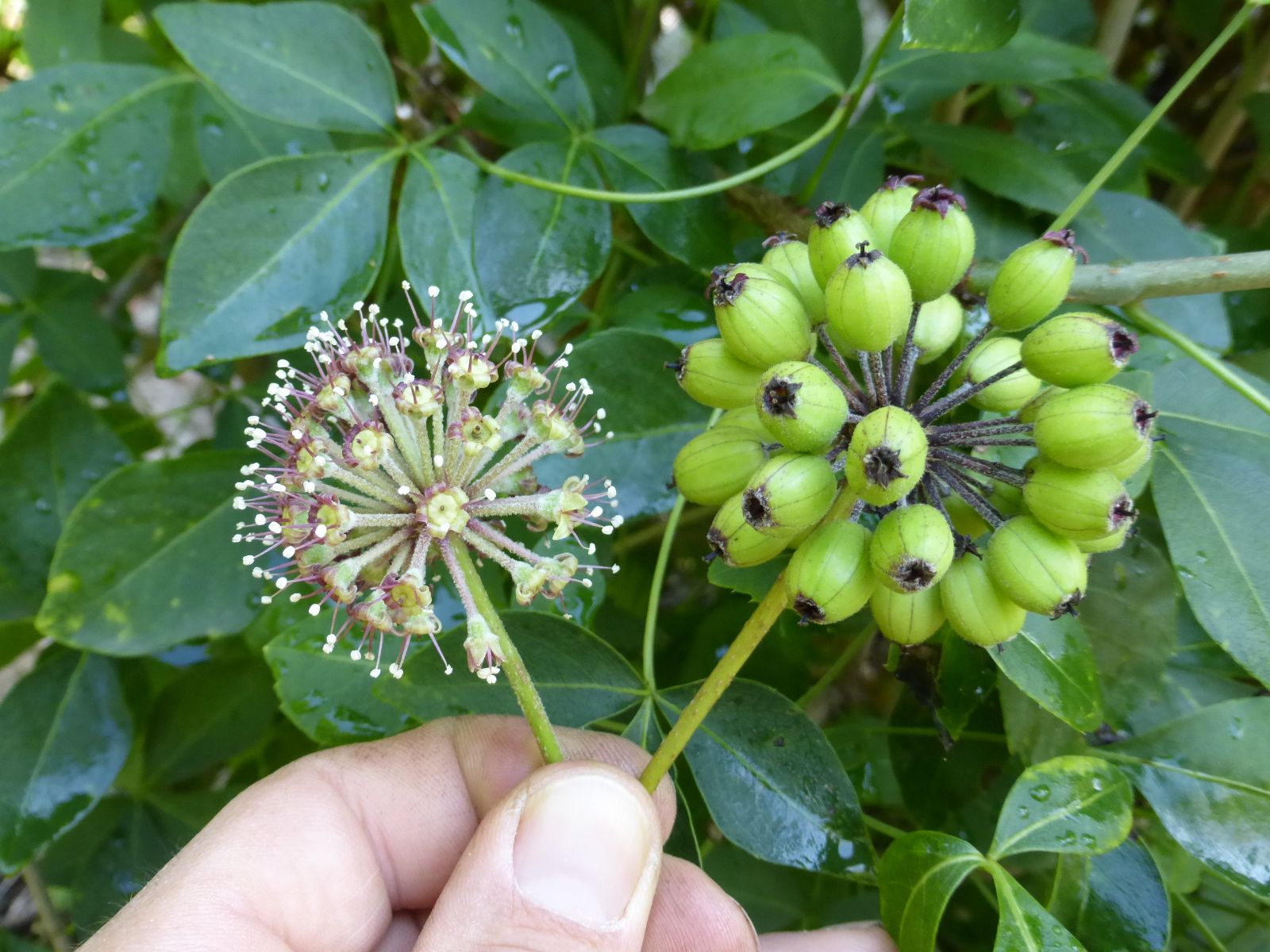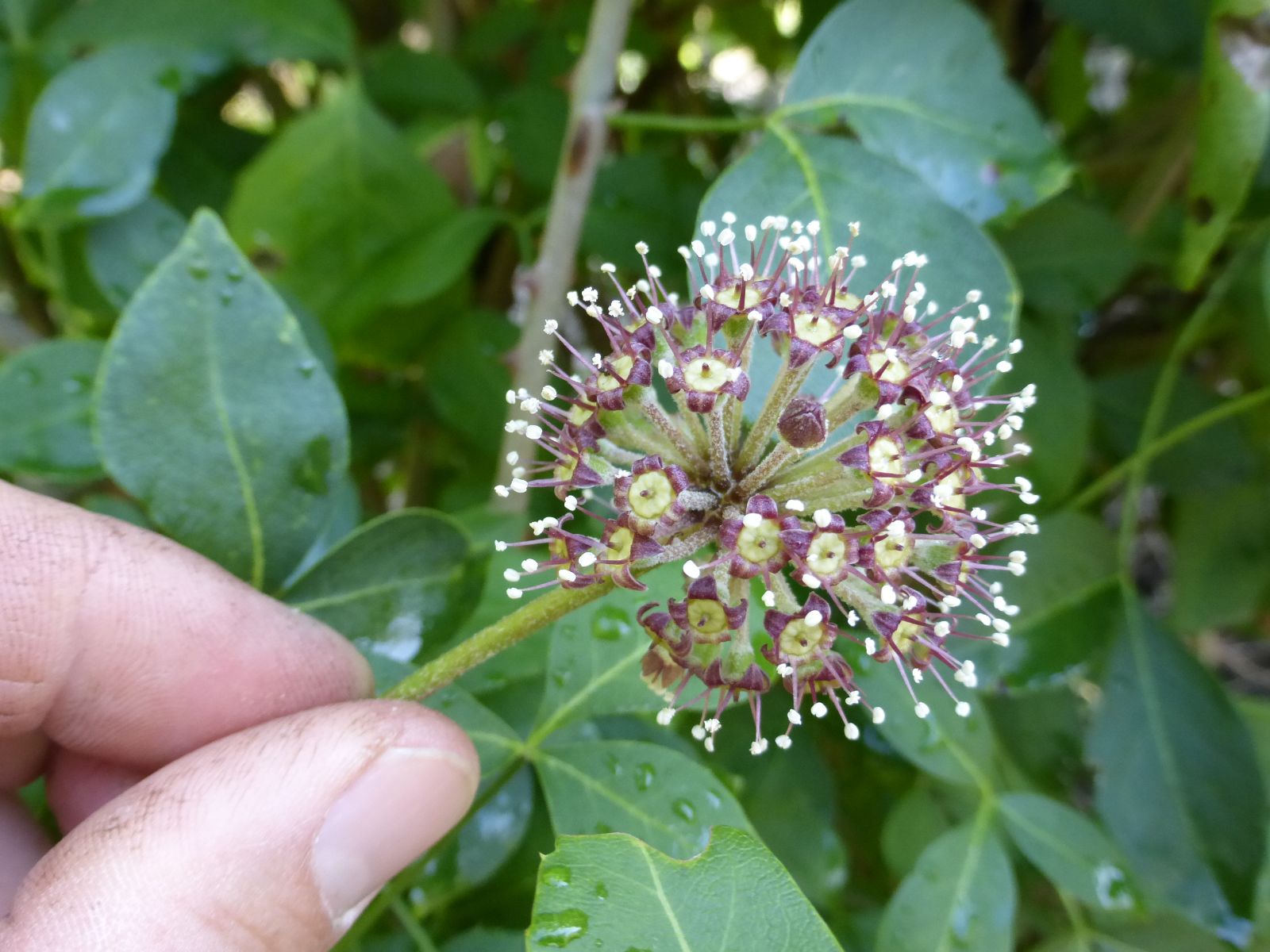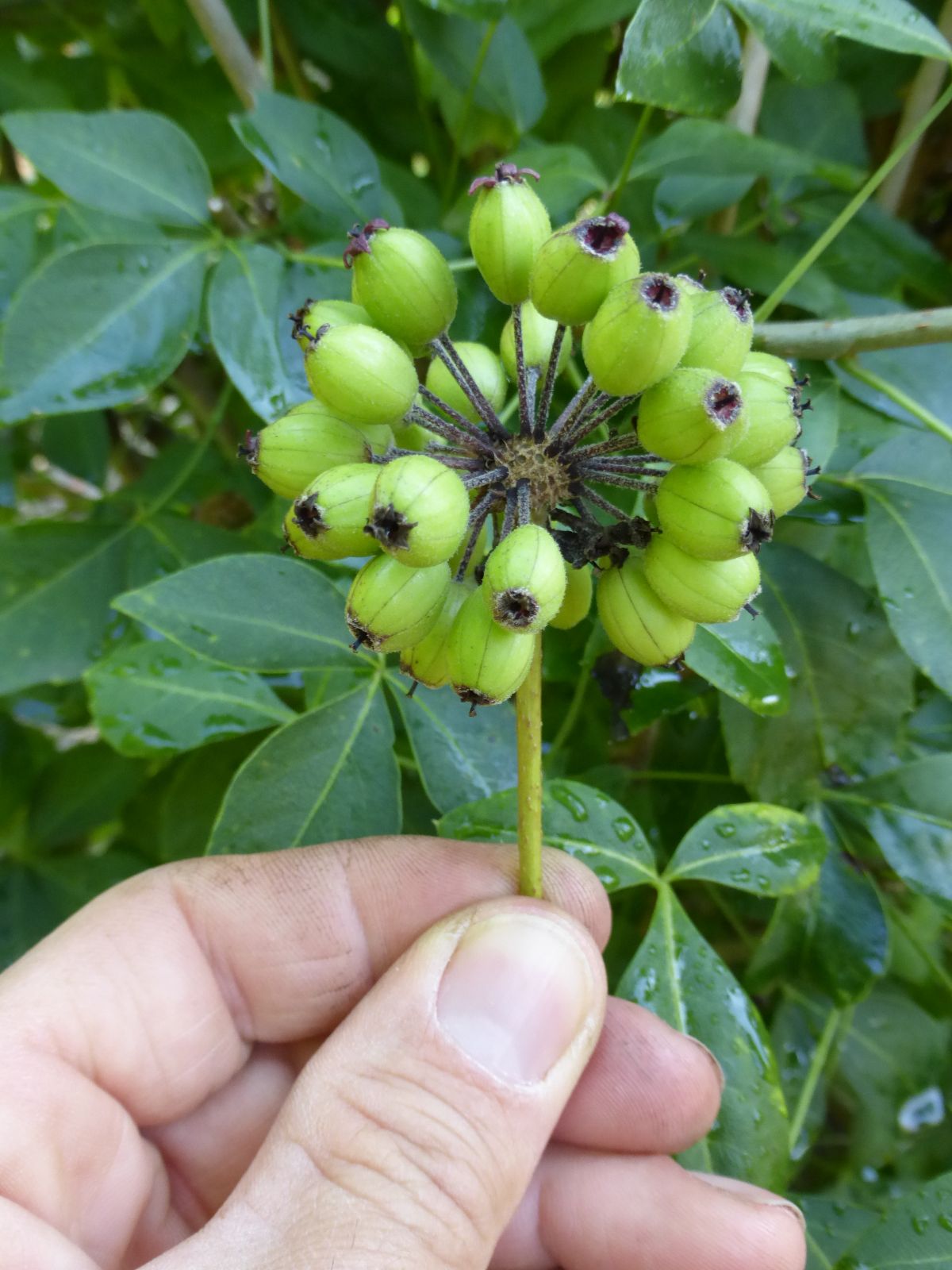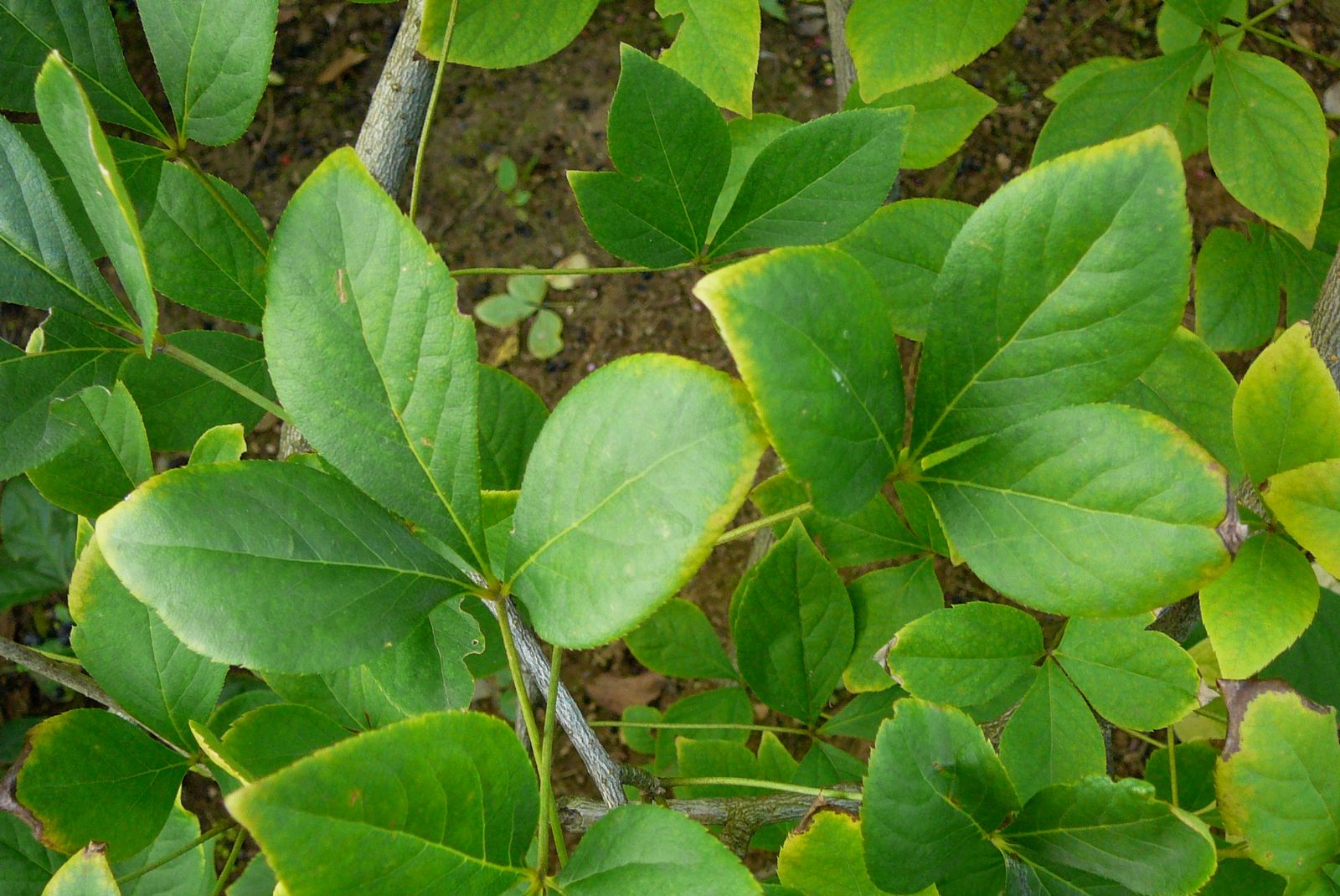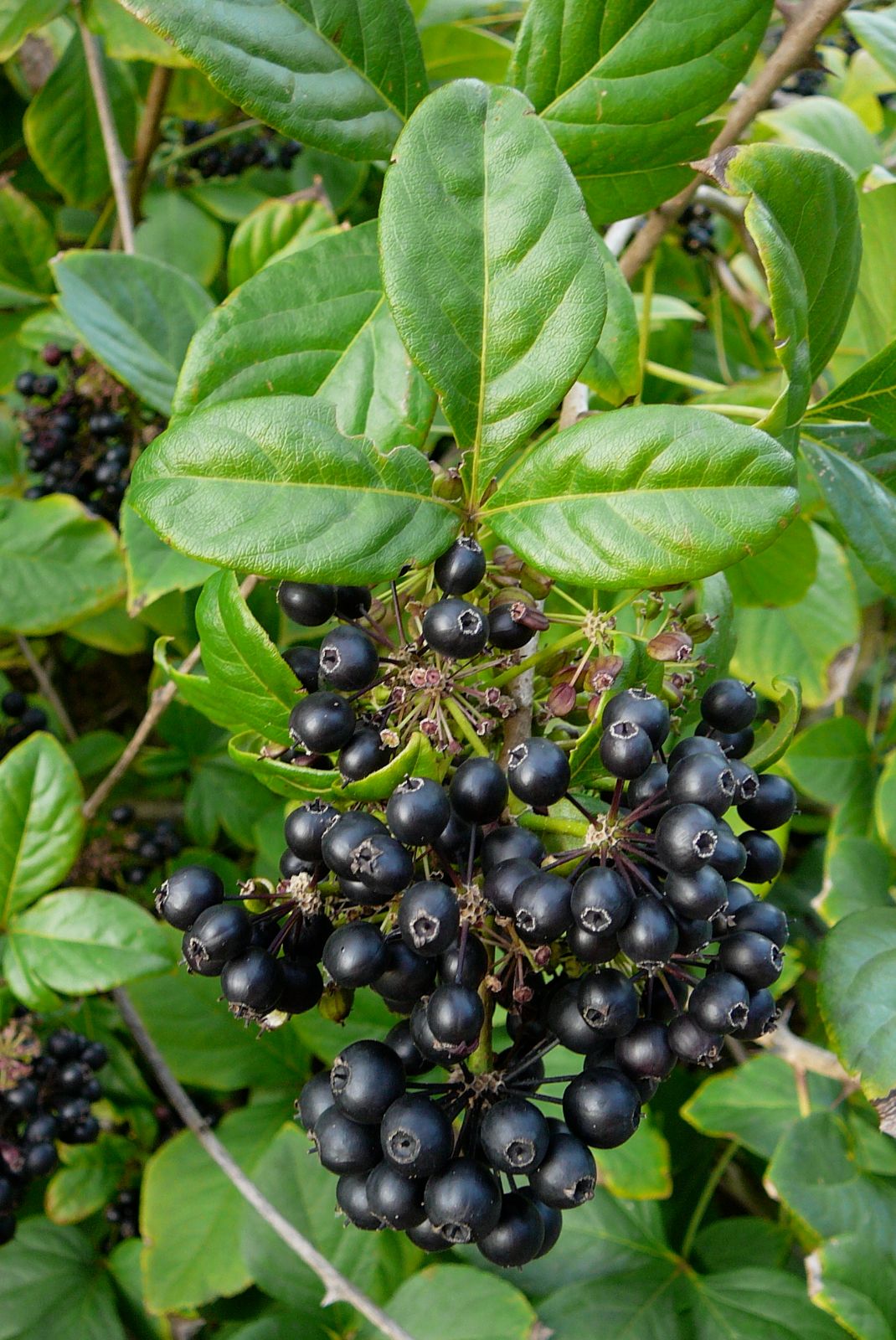Acanthopanax divaricatus
Credits
Article from Bean's Trees and Shrubs Hardy in the British Isles
Recommended citation
'Acanthopanax divaricatus' from the website Trees and Shrubs Online (treesandshrubsonline.
Genus
Synonyms
- Panax divaricatum Sieb. & Zucc.
A deciduous shrub of thin open growth, up to 12 ft high; young shoots glabrous or downy, sometimes armed with a pair of broad-based spines about 1⁄4 in. long at the joints. Leaves with normally five leaflets, sometimes reduced to three, borne on a downy main-stalk 1 to 31⁄2 in. long. Leaflets obovate to oblanceolate, simply or doubly toothed, gradually tapered at the base to a very short stalk; 2 to 41⁄2 in. long, 5⁄8 to 2 in. wide; dullish green and with tiny scattered bristles above, downy beneath. Flowers with brownish purple petals and yellowish anthers, very small, closely crowded in globose heads at or near the end of the leafy shoots. Each head is about 1 in. wide on a densely downy main-stalk rarely more than 1 in. long; individual flower-stalks covered with white down. Fruits black, 1⁄4 in. wide, borne in a spherical head, 11⁄2 in. in diameter, each surmounted by the slightly two-lobed style.
Native of Japan; described in 1845. Maries found it on the island of Yezo (Hokkaido) in 1880. I do not know if he introduced it for Messrs Veitch at the time, probably not, as he was there in August which is its flowering month, and too early for seeds. The first plant I saw at Kew was obtained from A. K. Bulley in 1898. As with other species its main features are its compound leaves and heads of black fruits. Its distinctive characters amongst the quinquefoliolate species are its two-lobed style, roughly downy leaves, and mossy stalk of the flower-heads.

